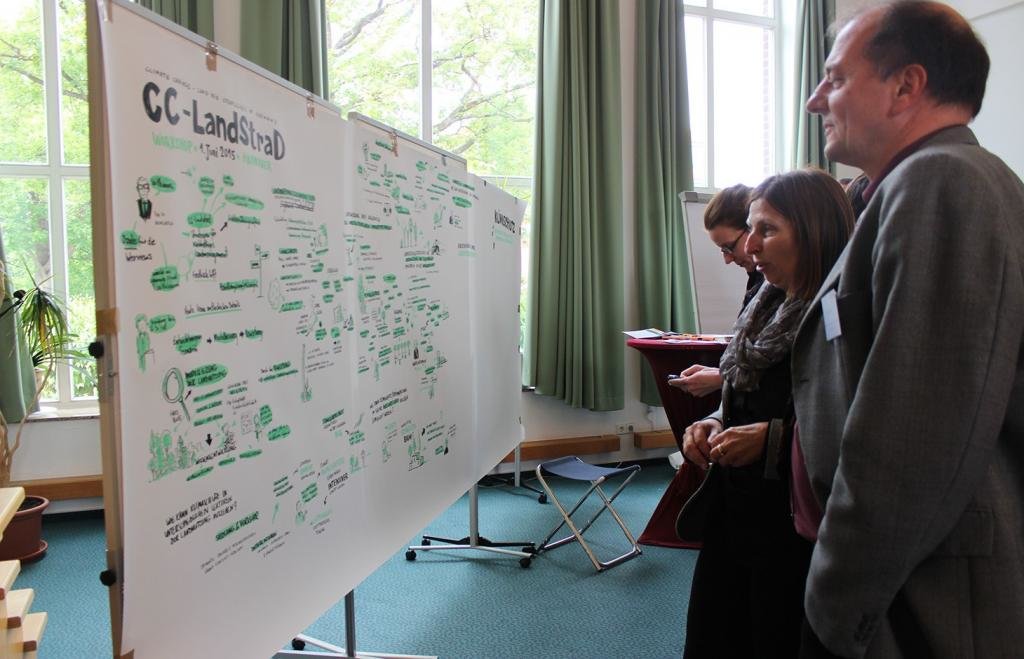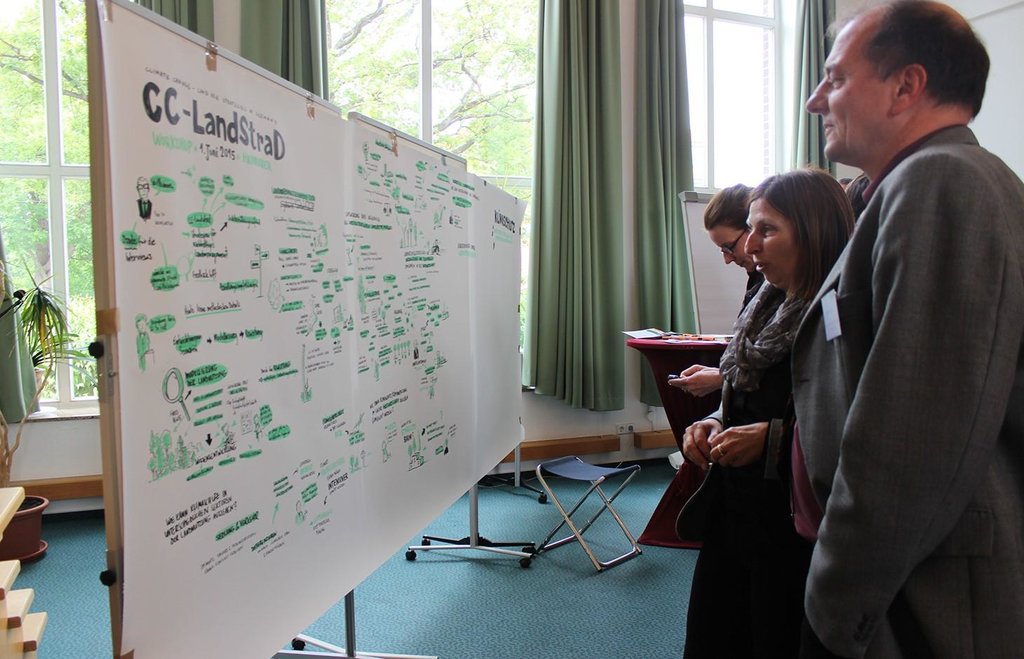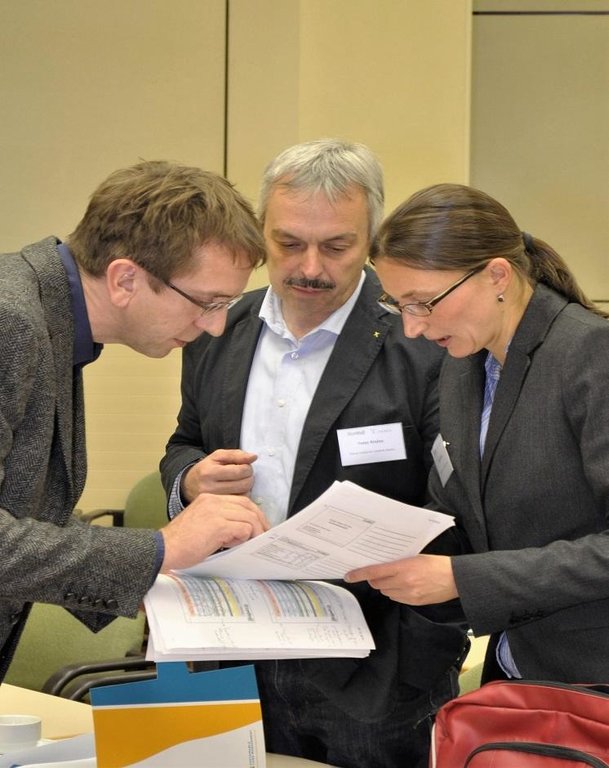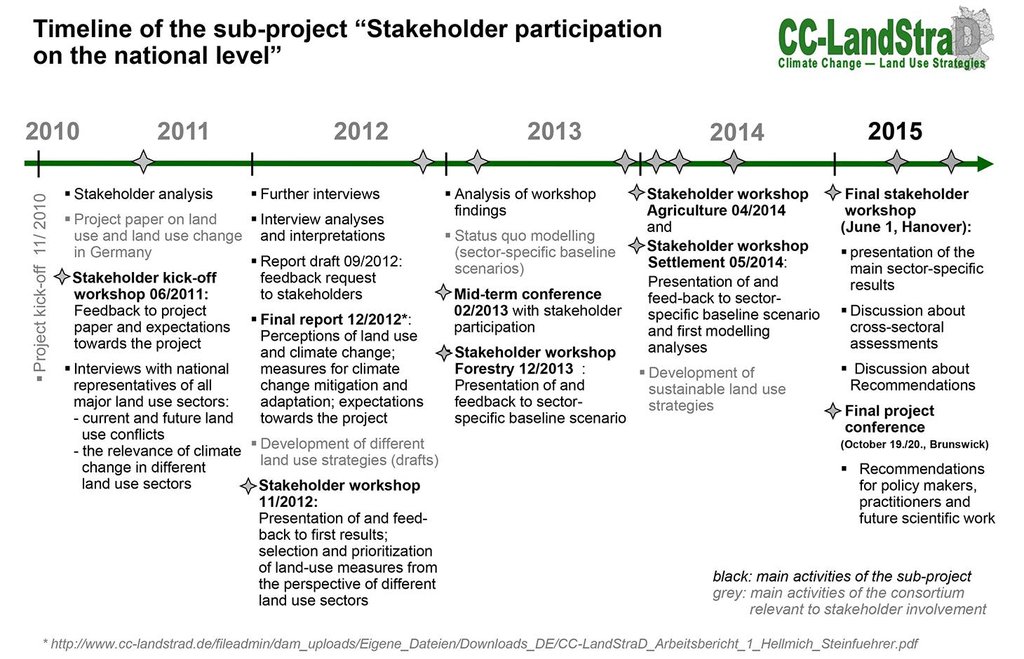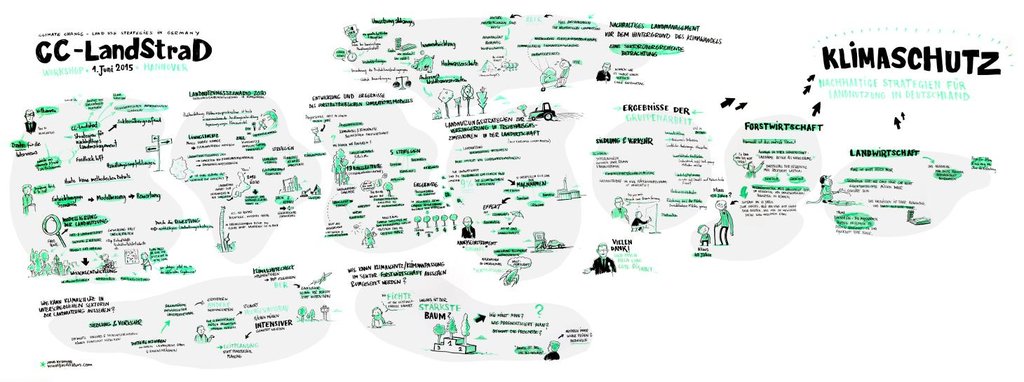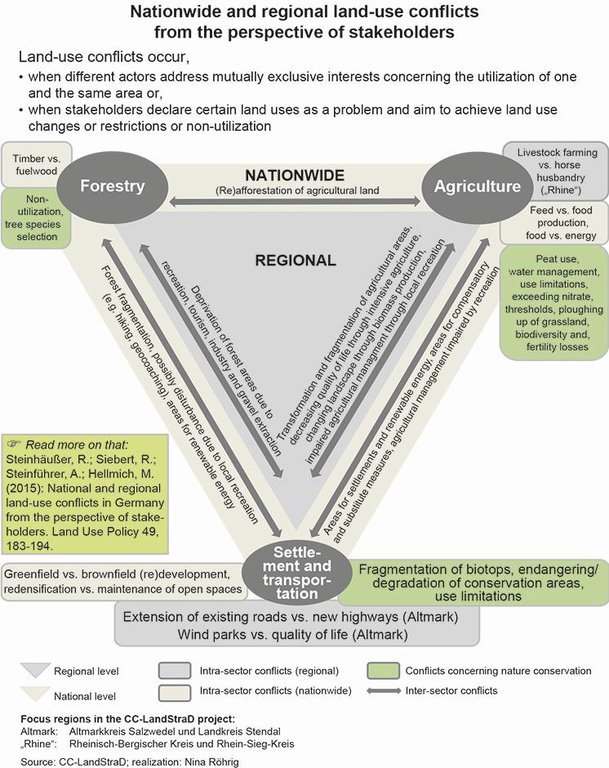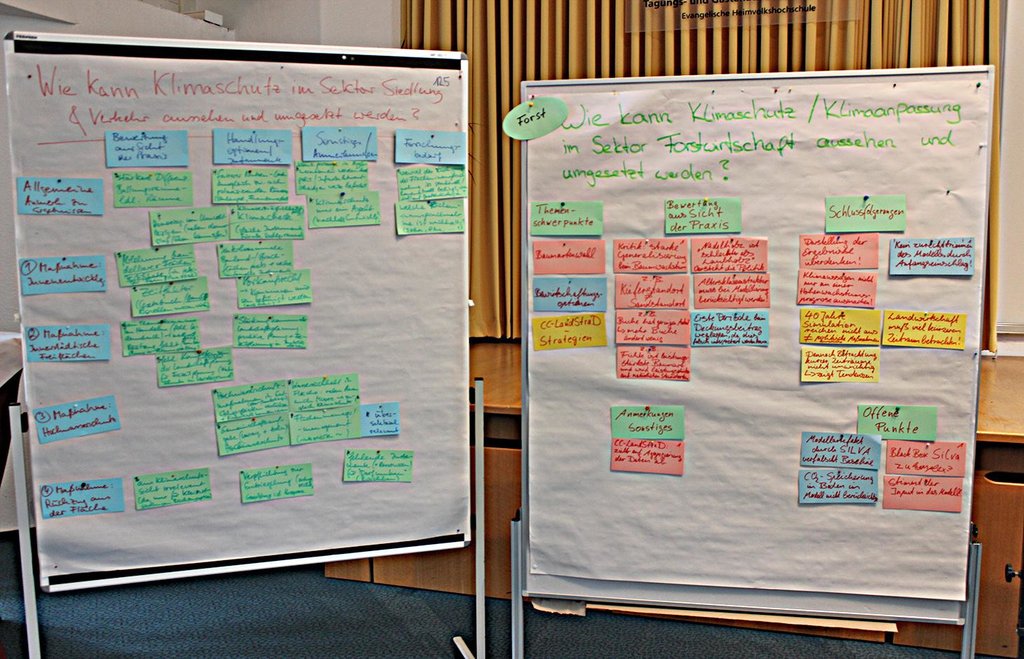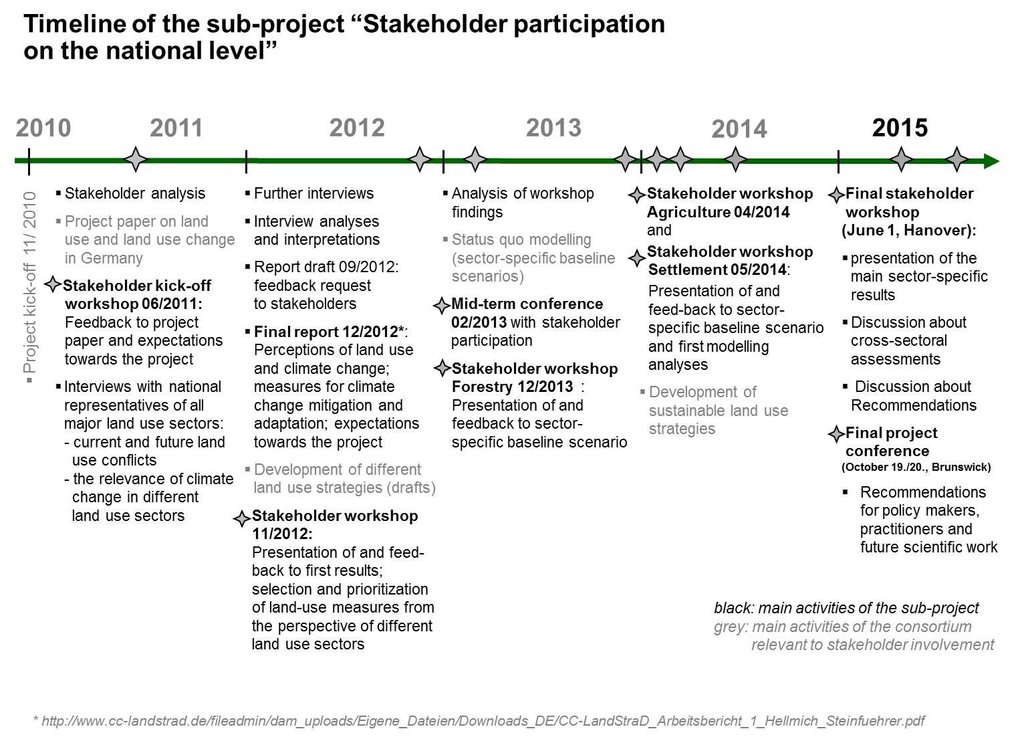Open dialogue platform on sustainable land management [ألمانيا]
- تاريخ الإنشاء:
- تحديث:
- جامع المعلومات: Johanna Fick
- المحرر: –
- المُراجع: Fabian Ottiger
approaches_2605 - ألمانيا
عرض الأقسام
توسيع الكل طي الكل1. معلومات عامة
1.2 تفاصيل الاتصال بالأشخاص الرئيسيين لمصدر المعلومات والمؤسسات المعنية بتقييم وتوثيق النهج
اسم المؤسسة (المؤسسات) التي سهلت توثيق/تقييم النهج (إذا كان ذلك على صلة)
CC-LandStraD - ألمانيااسم المؤسسة (المؤسسات) التي سهلت توثيق/تقييم النهج (إذا كان ذلك على صلة)
Thünen Institute (Thünen Institute) - ألمانيا1.3 الشروط المتعلقة باستخدام البيانات الموثقة من خلال WOCAT
متى تم تجميع البيانات (ميدانيا)؟:
04/08/2015
يوافق جامع المعلومات والشخص (لاشخاص) الرئيسي لمصدر المعلومات على الشروط المتعلقة باستخدام البيانات الموثقة من خلال WOCAT:
نعم
1.4 المراجع الخاصة باستبيان(استبيانات) تقنيات الإدارة المستدامة للأراضي
2. وصف نهج الإدارة المستدامة للأراضي
2.1 وصف موجز للنهج
Establishing a dialogue platform on sustainable land management which is open to all stakeholders
2.2 وصف تفصيلي للنهج
وصف تفصيلي للنهج:
Aims / objectives: The cross-sectoral stakeholder discussion platform on SLM aims to involve all relevant stakeholders in a specific SLM topic, or within a particular region in a dialogue process leading to better understanding and to a sustainable solution where there are multifunctional claims on land. The platform operates in Germany.
Examples of possible topics are to work out, together, the main land use conflicts in a region (e.g. reduced land for agriculture because of increased settlement pressures) and then to jointly develop sustainable solutions for the land use conflicts addressed. The platform was established by a non-governmental group within a transdisciplinary research project (CC-LandStraD) financed by the Federal Ministry of Education and Research (BMBF) in Germany. The transdisciplinary research approach is carried out in cooperation with regional authorities.
The platform was established by a non-governmental group of researchers of a transdisciplinary research project financed by the Federal ministery of education and research in cooperation with regional authorities (transdisciplinary approach).
Methods: The platform provides a forum to discuss specific topics cross-sectorally (for example, agriculture, forestry, settlement and transportation, and nature conservation) and for multi-stakeholders (for example land users, advisors, specialists, planners, and decision makers). To establish this platform, a neutral setting and external moderation is helpful. Methods which can be used at the platform include separate sectoral and cross-sectoral workshops, excursions, information events and newsletters. Furthermore, there are simulations of different scenarios on current land use and on land use development and distribution, and at the same time there is cross-sectorial and transdisciplinary learning. This platform is not a single event, but an on-going process. Access barriers, for example an entrance fee, should not exist.
Stages of implementation: To initiate a platform, the most relevant aspects of a region/community and all related stakeholders have to be established through a stakeholder analysis. Interviews and surveys are employed to indicate who the relevant stakeholders are. During interviews the potential stakeholders are asked who they work with regarding land use. Further stages then focus on the most relevant aspects. These may be current land use conflicts like losses of agricultural land because of settlement and transportation infrastructure. Alternatively they can be conflicts regarding production of goods either for food, feed or energy purposes, or disputes concerning intensive or extensive agriculture, with the consequent implications on nature and environment conservation. Depending on which conflict is addressed, the relevant stakeholder and the process which is needed (e.g. sectoral talks, cross-sectoral talks, focus groups) can be identified. To identify the most relevant land use conflicts stakeholder are asked to rank the most relevant land use conflicts that affect them.
Role of stakeholders: Each stakeholder is welcomed and has the opportunity to state his/her opinion in an open-result discussion. The cross-sectoral learning process is an important aspect of this approach. In the case presented case there is interaction between stakeholders from agriculture, forestry and settlement/transport as well as nature conservation, regional and environmental planning and governmental institutions. The stakeholders were asked for the main land use conflicts in their work, relevant measures to resolve the situation, and their design, then discussed the scenario assumption, and selected results and possible implications.
2.3 صور عن النهج
2.5 البلد/المنطقة/المواقع التي تم تطبيق النهج فيها
البلد:
ألمانيا
المنطقة/الولاية/المحافظة:
Germany, Saxony-Anhalt
مزيد من التفاصيل حول الموقع:
Altmarkkreis Salzwedel and district Stendal (total area of region: 4744 km²)
2.6 تواريخ بدء وإنهاء تنفيذ النهج
أشر إلى سنة البدء:
2010
سنة الإنهاء (إذا لم يعد النهج مطبقًا):
2015
2.7 نوع النهج
- قائم على مشروع/برنامج
2.8 الغايات/الأهداف الرئيسية للنهج
The Approach focused mainly on SLM with other activities (different interests on SLM in dialogue, cross-sectoral and with all related interest groups)
A cross-sectoral stakeholder discussion platform on SLM aims at involving all relevant stakeholders around a specific SLM topic, or within a particular region in a dialogue process leading to better understanding and improved, sustainable, solutions. In a “business as usual” situation, generally no cross sectoral talks or interaction take place. With such a platform however, more knowledge and direct talks between stakeholders from different sectors provide the opportunity for solutions.
The SLM Approach addressed the following problems: There are different and competing demands on land which can conflict with the conventional uses for agriculture and forestry. These include biomass for energy, new settlements and transportation infrastructure. Space is also needed for tourism and leisure facilities; and also for measures of environmental protection. All of these can have an impact on the area available for, and the management of, farmland and forests. And there are competing economic interests in land management. As land is a limited resource, problems between different stakeholders are inevitable and becoming more frequent.
2.9 الظروف التي تمكن أو تعيق تنفيذ التقنية/التقنيات المطبقة بموجب النهج
المعايير والقيم الاجتماعية /الثقافية/ الدينية
- معيق
All stakeholder have different backgrounds and different levels of knowledge and interests. Sometimes the relevant stakeholders don't know each other.
Treatment through the SLM Approach: A neutral setting, so that no stakeholder has a(n) (dis)advantage and an external
moderation which is accepted by all involved stakeholders, and professional input by experts (e.g. from research institutions) so that a joint learning process starts. Here it is essential to provide a good atmosphere and a common understanding of the key questions.
توفر/الوصول إلى الموارد والخدمات المالية
- معيق
Different stakeholders have different resources to contribute to this platform (e.g., time, finance, knowledge, equipment like beamer, microfons etc.).
Treatment through the SLM Approach: Trying to keep the barriers as low as possible and equal for each and every stakeholder (e.g. no entrance fee, public invitations in advance, central meeting location, meeting at a suitable time for the stakeholders).
الإطار القانوني (حيازة الأراضي، وحقوق استخدام الأراضي والمياه)
- تمكين/تمكيني
The existing land ownership, land use rights / water rights moderately helped the approach implementation: . The land ownership, land use rights/water rights are quite clear in Germany. So it is easy to identify the relevant stakeholders on SLM. But these are only a few target groups. There are much more which are relevant to get a good platform on SLM e.g. nature conservation groups, tourism associations.
عبء العمل، توفر القوى العاملة
- معيق
To implement and run a dialogue platform it takes time and professional skills and resources (e.g. high motivation and high frustration tolerance, moderation and motivation methods, knowledge about group dynamics).
Treatment through the SLM Approach: Be aware of this before the dialogue platform is set-up (such a process is not a one-off short-term, activity: it’s better thought of as medium-long term process).
غير ذلك
- معيق
1. Stakeholders have different levels of knowledge and professionality
2. Previous conflicts (some known; some hidden) and other areas of controversy sometimes come to light during discussions.
Treatment through the SLM Approach: 1. It is necessary to make information accessible by moderation and to create common understanding (e.g. sometimes the same term exists in agriculture and forestry but has a different meaning).
2. Be sensitive to nonverbal communication or conflict topics and be prepared to deal with such issues even if not communicated verbally.
3. المشاركة وأدوار الأطراف المعنية
3.1 أصحاب المصلحة المعنيون بالنهج وأدوارهم
- مستخدمو الأراضي المحليون/المجتمعات المحلية
Farmers, forest owners, counties, municipalities, associations on agriculture, forestry or nature conservation
Participating groups with less financial resources received travel grants
- متخصصون في الإدارة المستدامة للأراضي / مستشارون زراعيون
- الحكومة الوطنية (المخططون، صانعو القرار)
Regional planners, planners on settlement and transport
On federal and county level
Remark: should include: agricultural, forestal, settlement and transport sector as well nature conservation. It is essentiell to deal with all of these people, that is the important part of this approach
إذا كان هناك العديد من الأطراف المعنية، قم بالإشارة إلى الوكالة الرائدة:
We initiated this approach by a non-govenmental group of reseachers in cooperation with regional authorities. But this approach is not related to one body. Either national non-government or government or private sector or local government or local community/a group of land user can start the approach.
3.2 انخراط مستخدمي الأراضي المحليين/المجتمعات المحلية في المراحل المختلفة للنهج
| انخراط مستخدمي الأراضي المحليين/المجتمعات المحلية | حدد من شارك وصف الأنشطة | |
|---|---|---|
| المبادرة/التحفيز | تفاعلي | scientists working with transdisciplinary processes |
| التخطيط | تفاعلي | scientists on transdisciplinary processes and disciplinary scientists on SLM |
| التنفيذ | سلبي | all involved stakeholders mentioned above = passive; scientists = interactive |
| الرصد/التقييم | سلبي | all involved stakeholders mentioned above, scientists |
| Research | تفاعلي | all involved stakeholders mentioned above and all scientists |
3.3 مخطط التدفق (إذا كان متاحًا)
الوصف:
Time sheet stakeholder participation on national level.
The ‘sub-project' started in the first year with an overview workshop on current and future land use and climate change, followed by face-to-face interviews. The second year focused on the process to identify the most relevant measures for climate mitigation of each sector (agriculture, forestry, settlement and transportation, and nature conservation). The last three years were used to discuss preliminary results and to evaluate the results from the stakeholder perspectives.
المؤلف:
Meike Hellmich, Annett Steinführer (Thünen-Institut Braunschweig)
3.4 اتخاذ القرار بشأن اختيار تقنية/تقنيات الإدارة المستدامة للأراضي
هل تم اتخاذ قرارات بشأن اختيار التقنية(التقنيات)؟:
- multi-stakeholder dialogue process
اشرح:
Land users supported by SLM specialists e.g. an extensive management of grassland
SLM specialists with consultation of land users: practical test phase of new technology or innovative practise
by politicians / leaders (e.g. decisions regarding societal aims like environment protection)
Decisions on the method of implementing the SLM Technology were made by no decisions. No decisions have been made yet.
4. الدعم الفني وبناء القدرات وإدارة المعرفة
4.1 بناء القدرات/التدريب
هل تم تقديم التدريب لمستخدمي الأراضي / الأطراف المعنيين الآخرين؟:
نعم
حدد من تم تدريبه:
- مستخدمو الأراضي
- موظفون ميدانيون/ مستشارون
- involved people
المواضيع المغطاة:
The activities focused on each level/stage (measures, scenarios, results and implication) to provide knowledge to and with all participants in order to focus on the meeting's objectives and to raise awareness (why are we doing this? why is it important to be here? why should we talk about this topic?).
4.2 خدمة استشارية
هل يملك مستخدمو الأراضي وصولا إلى خدمة استشارية؟:
نعم
وصف/تعليقات:
Advisory service is quite adequate to ensure the continuation of land conservation activities; The approach raised awareness and brought people together who normally don’t discuss topics with each other.
4.3 تعزيز المؤسسات (التطوير التنظيمي)
هل تم إنشاء أو تعزيز مؤسسات من خلال هذا النهج؟:
- نعم، قليلا
حدد المستوى (المستويات) التي تم فيها تعزيز أو إنشاء المؤسسات:
- محلي
صف المؤسسة والأدوار والمسؤوليات والأعضاء وما إلى ذلك.
This method can support local institutions via the input and mutual discussions of regional associations and groups. However, certain groups may mutually exclude each other.
4.4 الرصد والتقييم
هل يشكل الرصد والتقييم جزءا من النهج؟:
نعم
التعليقات:
socio-cultural aspects were monitored by project staff through observations; indicators: Interviews by scientists at the project end regarding cross-sectoral and transdisciplinary approach
There were no changes in the Approach as a result of monitoring and evaluation
There were no changes in the Technology as a result of monitoring and evaluation
4.5 البحوث
هل كانت البحوث جزءًا من النهج؟:
نعم
حدد المواضيع:
- علم الاجتماع
- الاقتصاد / التسويق
- علم الايكولوجيا
أعط تفاصيل إضافية وأشر إلى من قام بالبحوث:
Simulation of land use development in Germany was undertaken, including simulation of agricultural economics, forest economics and simulation of settlement and transport areas development, of GHG emissions of land use, and a population survey on perceptions of landscapes
Research was carried out on station
5. التمويل والدعم المادي الخارجي
5.1 الميزانية السنوية لمكون الإدارة المستدامة للأراضي في النهج المذكور
إذا لم تكن الميزانية السنوية الدقيقة معروفة، قم بالإشارة إلى نطاقها:
- < 2000
التعليقات (على سبيل المثال المصادر الرئيسية للتمويل/الجهات المانحة الرئيسية):
Approach costs were met by the following donors: government: 95.0%; local government (district, county, municipality, village etc): 5.0%
5.2 الدعم المالي/المادي المقدم لمستخدمي الأراضي
هل حصل مستخدمو الأراضي على دعم مالي/ مادي لتنفيذ التقنية/ التقنيات؟:
كلا
5.3 إعانات لمدخلات محددة (بما في ذلك العمالة)
- غير موجود
التعليقات:
Time which was needed to take part in the dialogue platform other inputs not relevant
5.4 الائتمان
هل تم توفير ائتمان في إطار نهج أنشطة الإدارة المستدامة للأراضي؟:
كلا
6. تحليل الأثر والتصريحات الختامية
6.1 آثار النهج
هل ساعد النهج مستخدمي الأراضي على تنفيذ وصيانة تقنيات الإدارة المستدامة للأراضي؟:
- لا
- نعم، قليلا
- نعم، باعتدال
- نعم، إلى حد كبير
The complex topic land use and climate change (with focus on climate change mitigation) was analysed and presented to the involved stakeholders. The interaction during cross-sectoral workshops gave a more detailed picture on SLM compared with workshops with a sectoral focus. The better knowledge base helps to improve SLM.
هل ساهم النهج في تمكين الفئات المحرومة اجتماعيا واقتصاديا؟:
- لا
- نعم، قليلا
- نعم، باعتدال
- نعم، إلى حد كبير
Not in the focus
Did other land users / projects adopt the Approach?
- لا
- نعم، قليلا
- نعم، باعتدال
- نعم، إلى حد كبير
The approach is also used in regional development processes sometimes.
Did the Approach lead to improved livelihoods / human well-being?
- لا
- نعم، قليلا
- نعم، باعتدال
- نعم، إلى حد كبير
; the awareness of intensive land use in Germany and in our focus regions was raised, especially regarding the interaction between agricultural land use and (for example) water quality because of intensive agriculture including the application of fertilizers, pesticides or herbicides. Often these chemical inputs cannot absorbed by plants or soil so the unused resources concentrate in groundwater and thus needs to purified before drinking. Land use improvements can be achieved by agreeing the division between settlement, transport and land for agricultural production - and also for sustainable land use to reduce GHG emissions in agriculture and forestry.
Did the Approach help to alleviate poverty?
- لا
- نعم، قليلا
- نعم، باعتدال
- نعم، إلى حد كبير
6.2 المحفز الرئيسي لقيام مستخدمي الأراضي بتنفيذ الإدارة المستدامة للأراضي
- الانتماء إلى حركة/ مشروع/ مجموعة/ شبكات
in this approach all land using sectors were involved for the first time
6.3 استدامة أنشطة النهج
هل يمكن لمستخدمي الأراضي المحافظة على استدامة ما تم تنفيذه من خلال النهج (بدون دعم خارجي)؟:
- نعم
إذا كانت الإجابة بنعم، صف كيف:
This approach is suitable for different levels, for different topics or different stakeholders involved.
6.4 نقاط قوة/مزايا النهج
| نقاط القوة/ المزايا/ الفرص من وجهة نظر مستخدمي الأراضي |
|---|
| New information, innovative methods and results, current political trends (How to sustain/ enhance this strength: Presentation of new information has to be in a language adequate for the target groups.) |
| نقاط القوة/ المزايا/ الفرص من وجهة نظر جامع المعلومات أو غيره من الاشخاص الرئيسيين لمصدر المعلومات |
|---|
| Added value e.g. research can be needed to get new input (How to sustain/ enhance this strength: Clear announcement of added value for different target groups) |
| All relevant stakeholders are involved (How to sustain/ enhance this strength: make sure that all relevant stakeholders are identified during the initial stakeholder analysis.) |
| Cross-sectoral and sectoral meetings by turns, depending on specific aspects of the meeting (How to sustain/ enhance this strength: Problem and solution oriented talks and meetings) |
| Neutral setting and external moderation |
| New information and knowledge by researcher is shared (How to sustain/ enhance this strength: Cooperation with research institution) |
6.5 نقاط الضعف/ العيوب في المنهج وطرق التغلب عليها
| نقاط الضعف/ المساوىء/ المخاطر من وجهة نظر مستخدم الأراضي | كيف يمكن التغلب عليها؟ |
|---|---|
| There should be an added value for land user and the added value should be addressed clearly. | e.g. new information provided by researcher must be tailored to the different stakeholders. |
| نقاط الضعف/ المساوىء/ المخاطر من وجهة نظر جامع المعلومات أو غيره من الاشخاص الرئيسيين لمصدر المعلومات | كيف يمكن التغلب عليها؟ |
|---|---|
| It takes time to produce the right working atmosphere and to reach a common language. | Avoid short-term initiatives. |
|
The moderation has to be accepted by all stakeholders. |
7. المراجع والروابط
7.1 طرق جمع/مصادر المعلومات
- زيارات ميدانية، مسوحات ميدانية
- مقابلات مع مستخدمي الأراضي
7.2 المراجع للمنشورات المتاحة
العنوان، المؤلف، السنة، النظام القياسي الدولي لترقيم الكتب ISBN:
Steinhäußer, R. et al. (2015) National and regional land-use conflicts in Germany from the perspective of stakeholders
متاح من أين؟كم التكلفة؟:
Land UsePolicy 49, 183-194
العنوان، المؤلف، السنة، النظام القياسي الدولي لترقيم الكتب ISBN:
• Lange, A.; Siebert, R.; Barkmann, T. (2016) Incrementality and Regional Bridging: Instruments for Promoting Stakeholder Participation in Land Use Management in Northern Germany.
متاح من أين؟كم التكلفة؟:
Society & Natural Resources , Jul2016, Vol. 29 Issue 7, p868-879, 12p.
الروابط والوحدات المواضيعية
توسيع الكل طي الكلالروابط
لا يوجد روابط
الوحدات المواضيعية
لا يوجد وحدات مواضيعية



